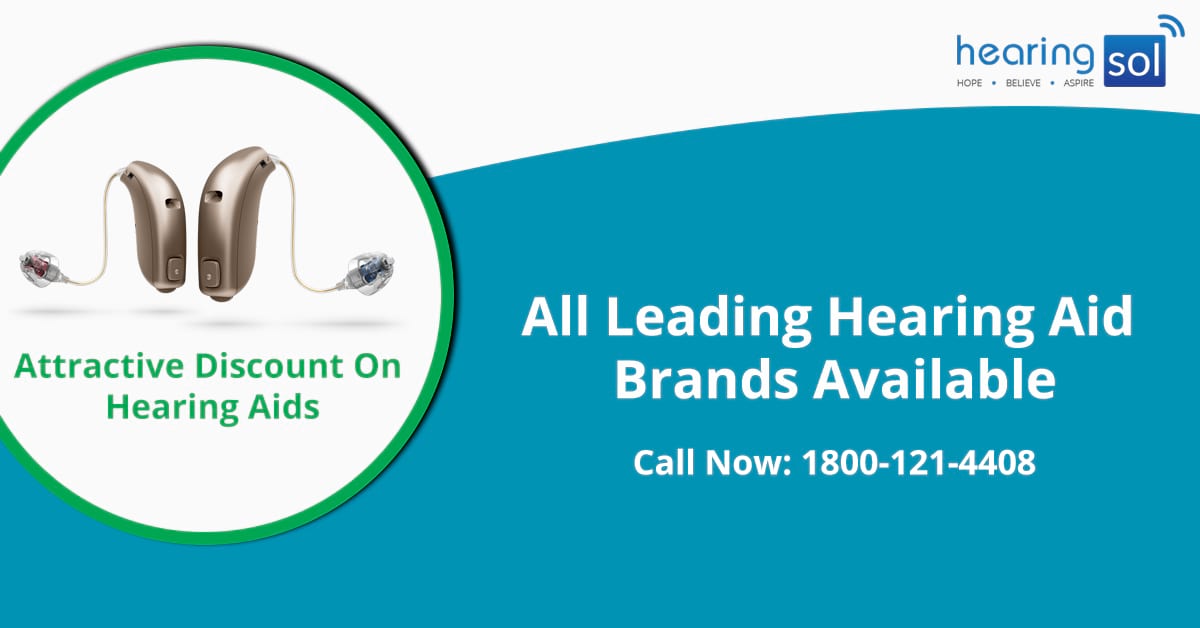
People who suffer from chronic ear infections might find regular hearing aids worsen their symptoms.
BAHA stands for the bone-anchored hearing aid. This type of hearing aid is suitable for mild, moderate, mixed or conductive hearing loss. This hearing device is an alternative to the regular hearing aid.
This is mainly favorable for those who have a conductive hearing impairment, one-sided hearing loss, single-handed deafness, and People with mixed hearing loss who may not otherwise be able to wear ‘in the ear’ or ‘behind the ear’ hearing aids.
You can purchase the latest hearing aids at a fair price through HearingSol, If you need more information or you have a query about Bone Anchored Hearing Aid or Hearing Loss, just give us a call on +91-9327901950. We are always here to help you.
Bone-anchored hearing aid
This type of hearing aid is suitable for the people who are having a problem in an outer or middle ear. It transfers the sound by bone vibration directly to the cochlea, bypassing the outer and inner ear. Suppose someone having the problem in wearing the hearing aids or hearing aids does not give effective benefits, BAHA is helpful.
They are more expensive than conventional hearing aids. In 1996 Food and Drug Administration approved BAHA for conductive and mixed hearing loss and then in 2002 for unilateral hearing loss.
How does it function?
Bone-anchored hearing aids use a surgically implanted abutment to transmit sound by direct conduction through the bone to the inner ear, bypassing the external auditory canal and middle ear. Surgically a titanium prosthesis inserted into the skull with a small abutment exposed outside the skin. A sound processor sits on this abutment and transmits sound vibrations to the titanium implant. The implant vibrates the skull and inner ear, which stimulate the nerve fibers of the inner ear, allowing the hearing.
BAHA Surgery
The implantation of BAHA is a simple procedure in the operation room. Generally, it takes approximately 1 hour. The patient has the option of general or local anesthesia. A special skin attaches behind the deaf ear, and the skin and fats of the skin remove from the scalp. A hole drill into the scalp and titanium screw and an abutment insert simultaneously. The skin is brought to the oscillation, and a small hole is made in the skin, through which the abutment protrudes. The skin is sewed back in position and 2 dressings are applied. Outer dressing removes on the next day and the internal dressing remains for 7-10 days.
There is slight post-operative pain and the patient is able to return to most of his life the next day. The skin is usually cured within 2 weeks, but the hearing is not worn for 2 months, from which time the bone gets the time to integrate the Osseo into titanium screw.
Uses
The BAHA is helpful for the following purposes :
- Chronic Ear disease – Bone conduction hearing device bypassing the middle ear may be a more appropriate treatment for these patients. Good transmission of sound in the bone, with reduced attenuation and distortion, may be possible.
- Unilateral Deafness – This type of hearing aid facilitates the hearing abilities in case of single-sided deafness.
- External ear canal problems – This is the best hearing aid for treating the external ear canal problems. As it involves the bone conduction hearing abilities.
- It can increase hearing in a noisy environment and helps to localize the sounds.
- In addition, improve understanding speech, it also results in a natural sound with less distortion.
- Malformations – A BAHA works for these individuals because it delivers sound vibrations directly to the inner ear by being in direct contact with the skull bones.
Read More –
- Use Smartphone Remote Control App for your Hearing Aids
- How many sizes of hearing aid batteries available?

